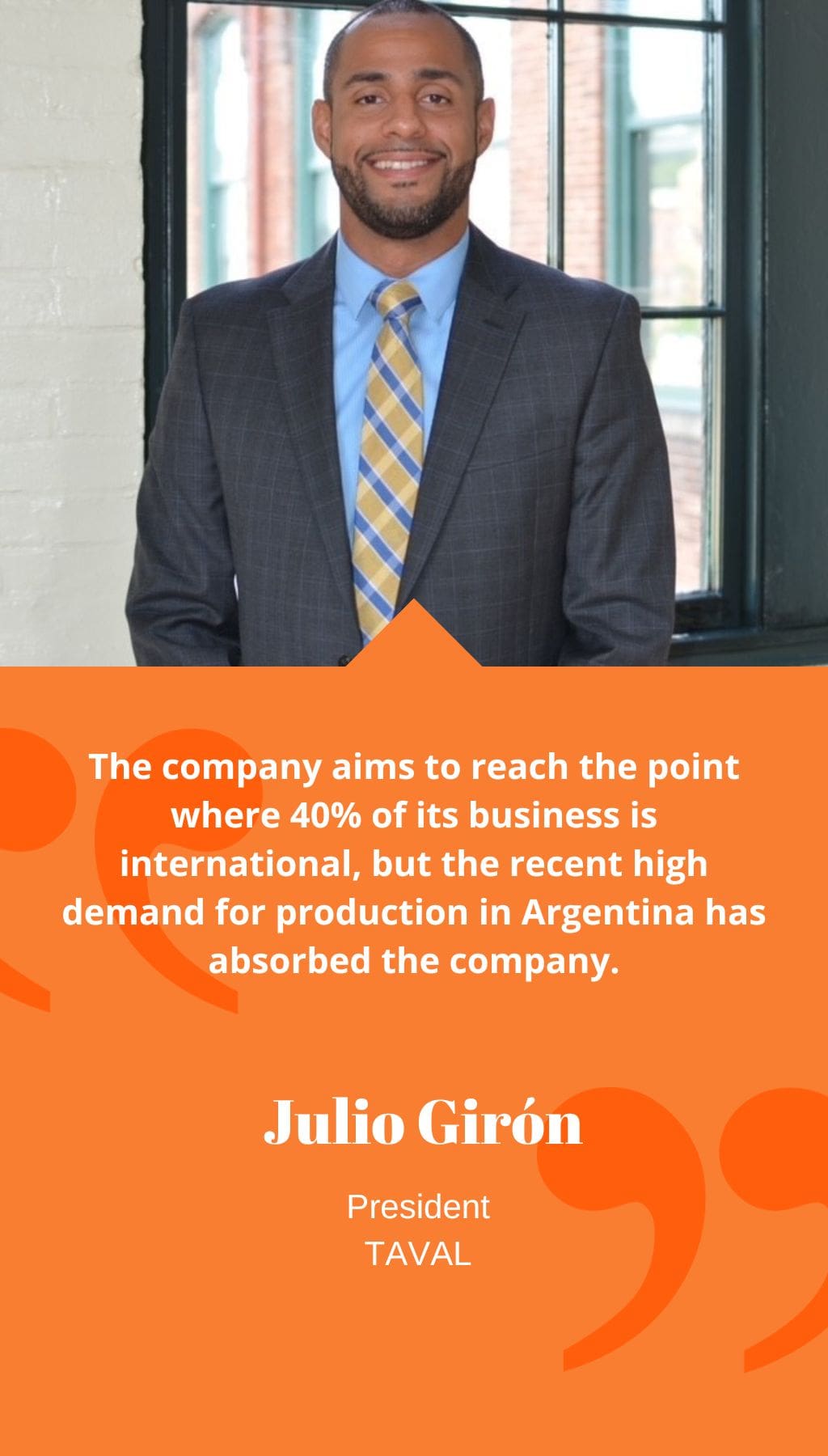
- Argentina | 15 July 2017

Can you please provide us with an overview of Taval and its background in Argentina?
Taval originated in 1997 as a spinoff of a company owned by the founder’s last name, Girón. Since then, Taval has undergone significant changes in terms of expanding production capacity, adopting new technologies, and hiring more technical staff. Its predecessor, Taval LSR, had a small staff of six in the plant and seven in the office. However, the company has grown exponentially over the years, and Taval now holds a prominent position as a referent for valves in the industry, and it indicates the price and commercial conditions of valves. Taval has also made strategic incursions in Asia, specifically China, where it has a strategic partner that enables it to manufacture parts and source raw materials.
Can you elaborate on how Taval partners with Chinese manufacturers?
Taval’s partnership with Chinese manufacturers began with a search for cheaper raw materials. The company met with various manufacturers and producers in China until they selected the ones they wanted to work with. Working together with the Chinese partner, Taval leverages its engineering and industrial work systems and manufactures parts for the company, as well as raw materials. This enables Taval to grow exponentially compared to competitors that do not have centers in China. Taval’s partnership with China has also led the company to connect with various valve manufacturers in China that produce similar products as Taval, and they share the same engineering and models. The company is preparing a presentation for the Ministry to present the Chinese partner company, which will cover topics such as the types of valves produced.
How has Taval’s recent expansion into the international market gone so far?
Taval began expanding internationally a year and a half ago, and it now works with virtual offices in the four countries it operates in, delivering products from Argentina directly or from subsidiaries in Hong Kong, Asia, and Latin America. These virtual offices allow Taval to enter the markets of other countries in two ways. The first way is that a company acts as a distributing company from which any client calls and buys. The second way is that Taval can register and authorize itself in state entities in each country it operates in, allowing it to participate in important bids and continue to compete globally. Taval’s international business is still not significant in terms of revenues, although the company has participated in large bids in Latin America, such as Uruguay and Paraguay, with important successes. The company aims to reach the point where 40% of its business is international, but the recent high demand for production in Argentina has absorbed the company.
Can you tell us about the types of investments Taval has made in equipment and technology?
Taval has invested in various pieces of equipment and technology over the years. For instance, it bought its first three SVCs in 1997, followed by four more around 2001 and six more a year and a half ago. The company’s largest pieces of equipment come from trips to Taiwan’s TIMTOS Fair, an international equipment fair. Taval has also adopted the BOBCAM program, which allows the company to design and implement mechanization of equipment. Working in 3D optimizes design and permits the viewing of a piece from all its angles to check its connectivity and proper design. Financing investments and growth has changed since the company’s inception. Initially, the founder’s personal patrimony and his partner’s and his last name’s reputation in the market were the guarantees for banks to give the company credit. However, over time and with the company’s explosive growth, it became financially stable, and Taval now owns everything it has. The company now buys everything with its own money, and bank credit is used only for convenience since Taval now receives subsidized credit.














